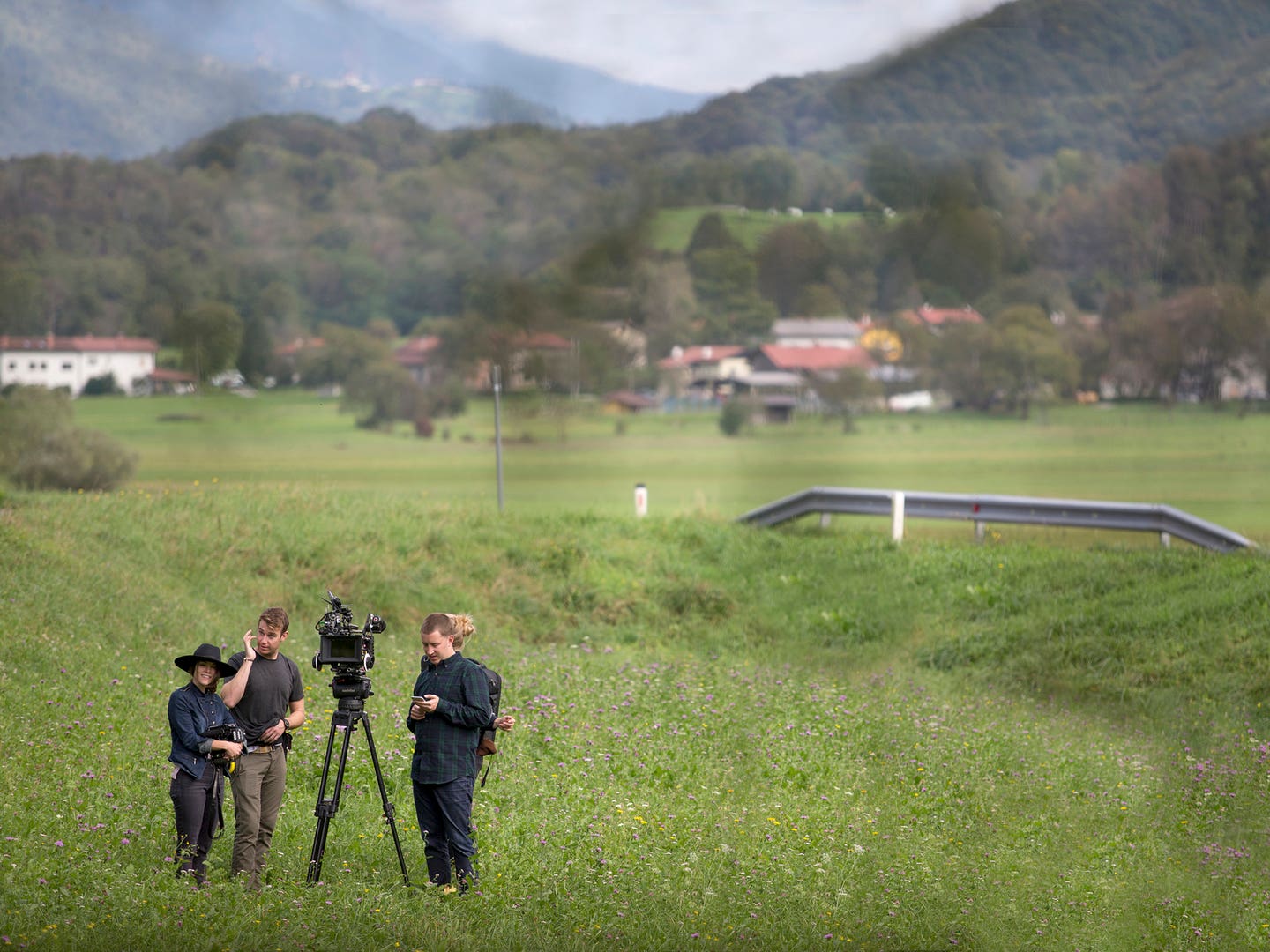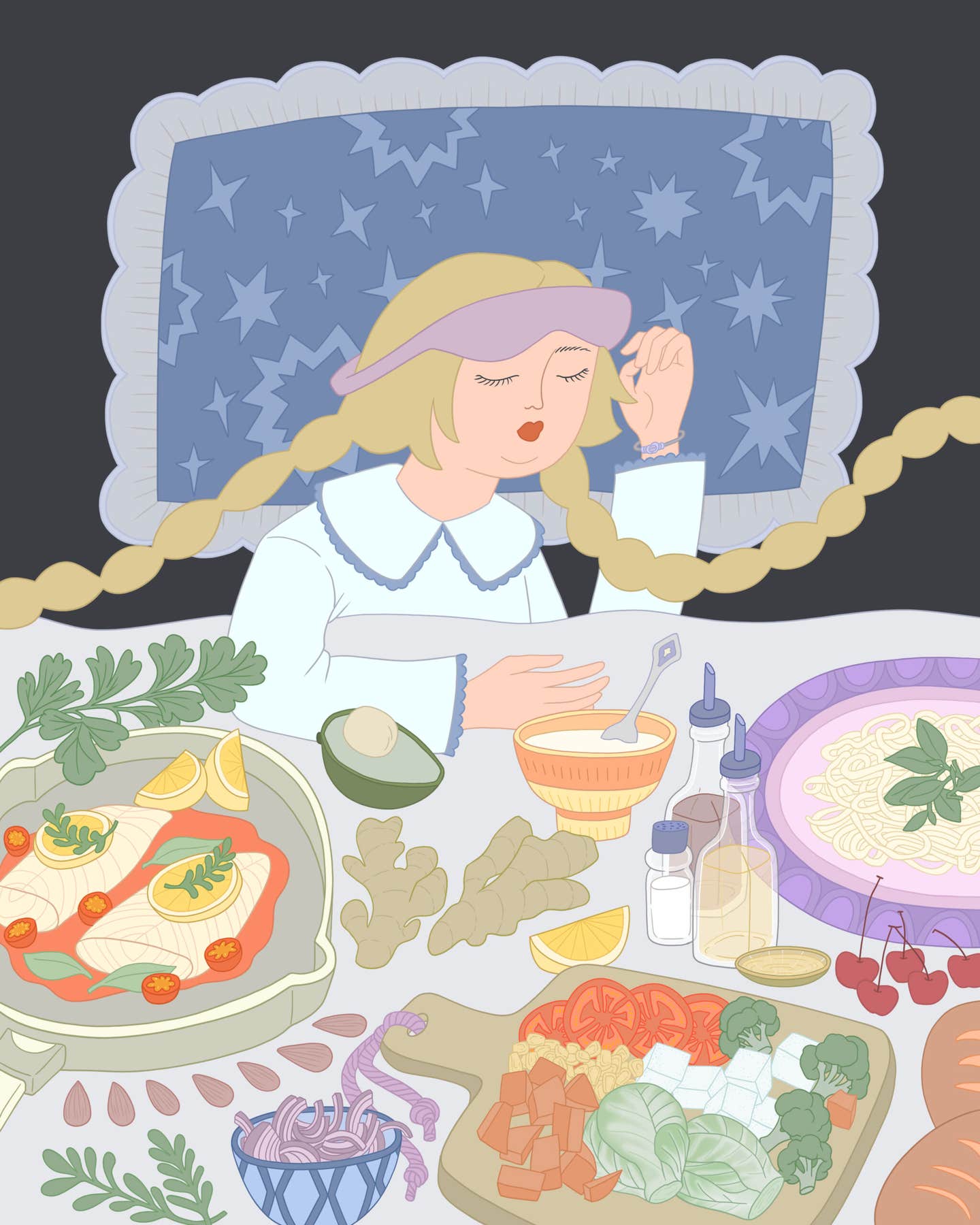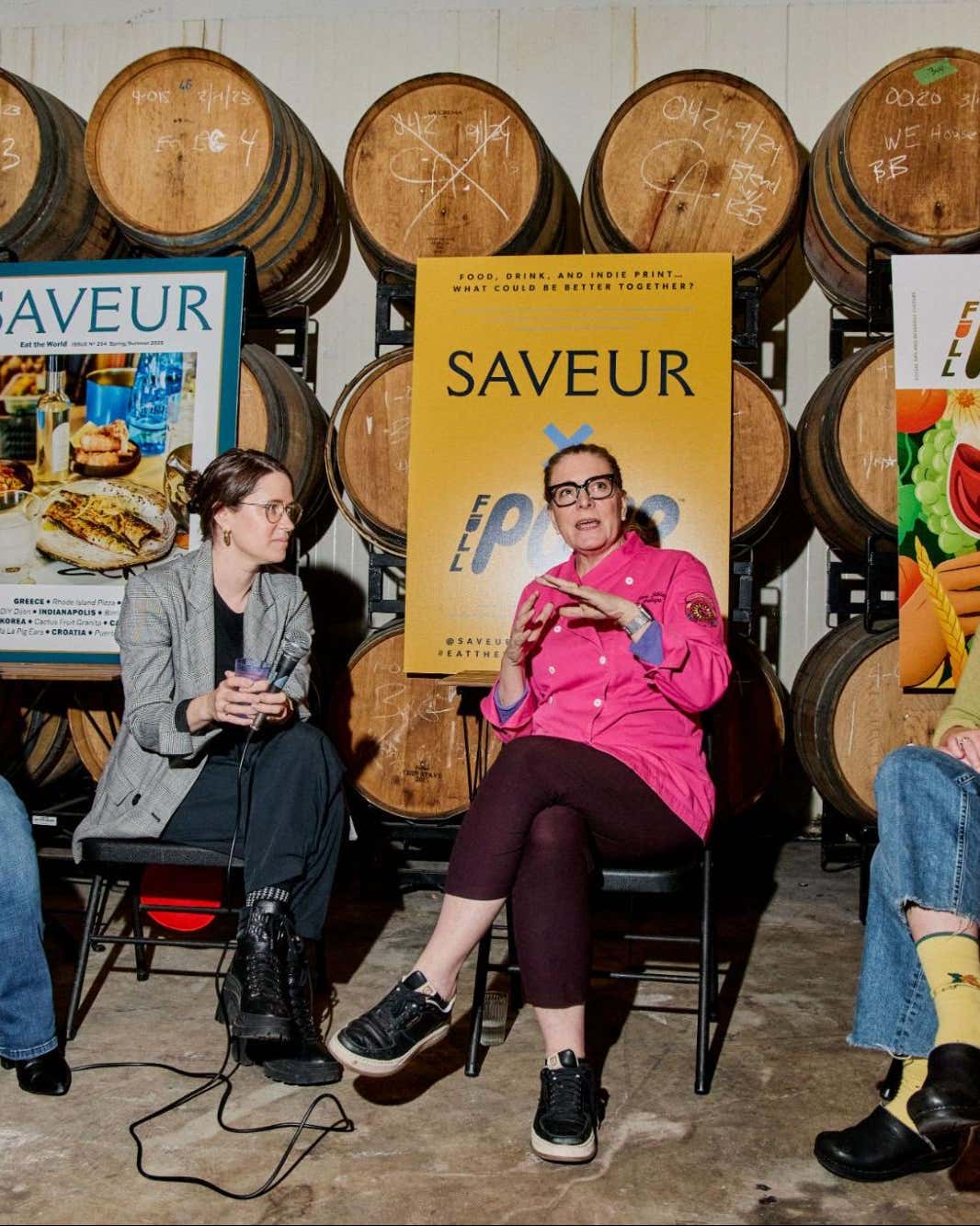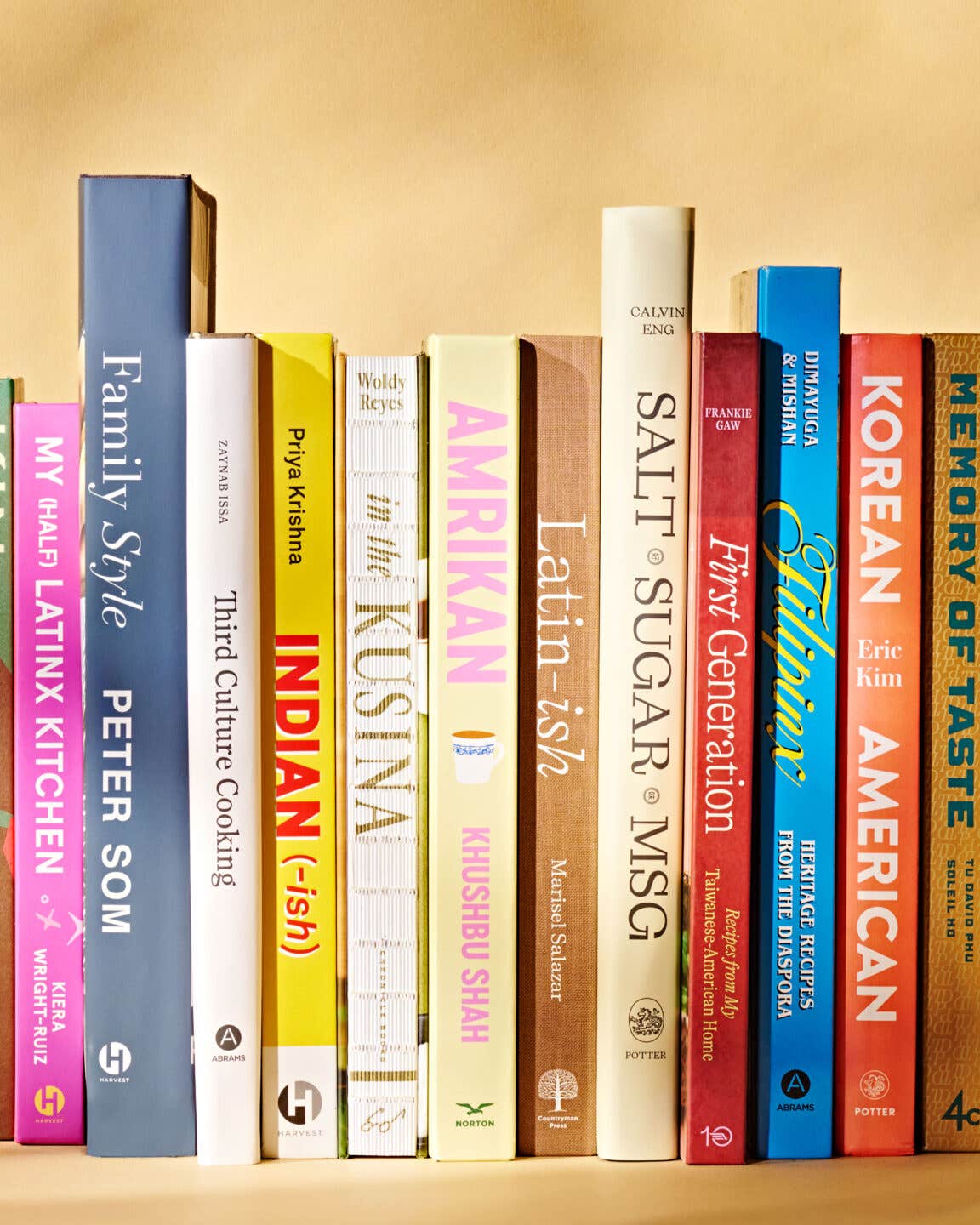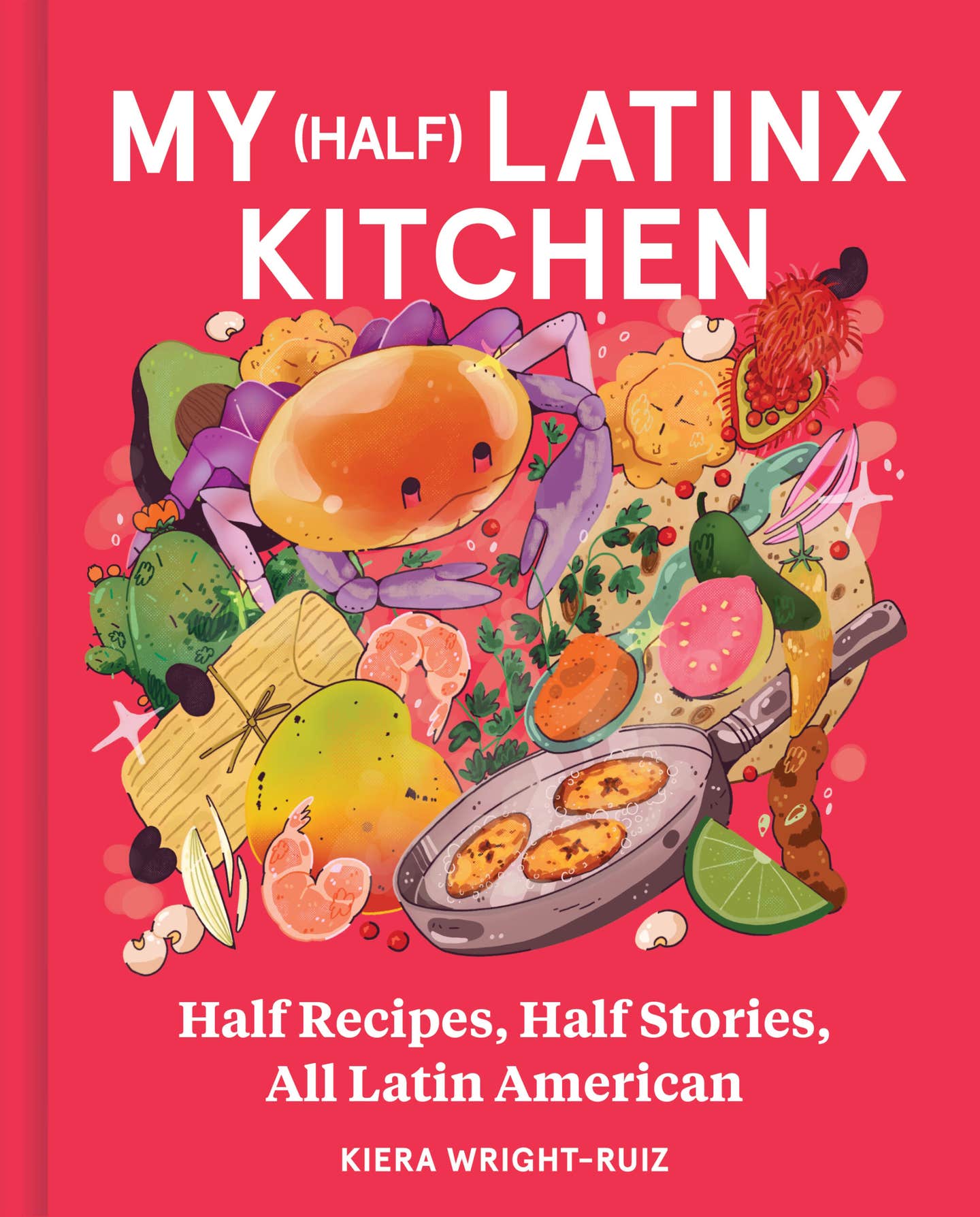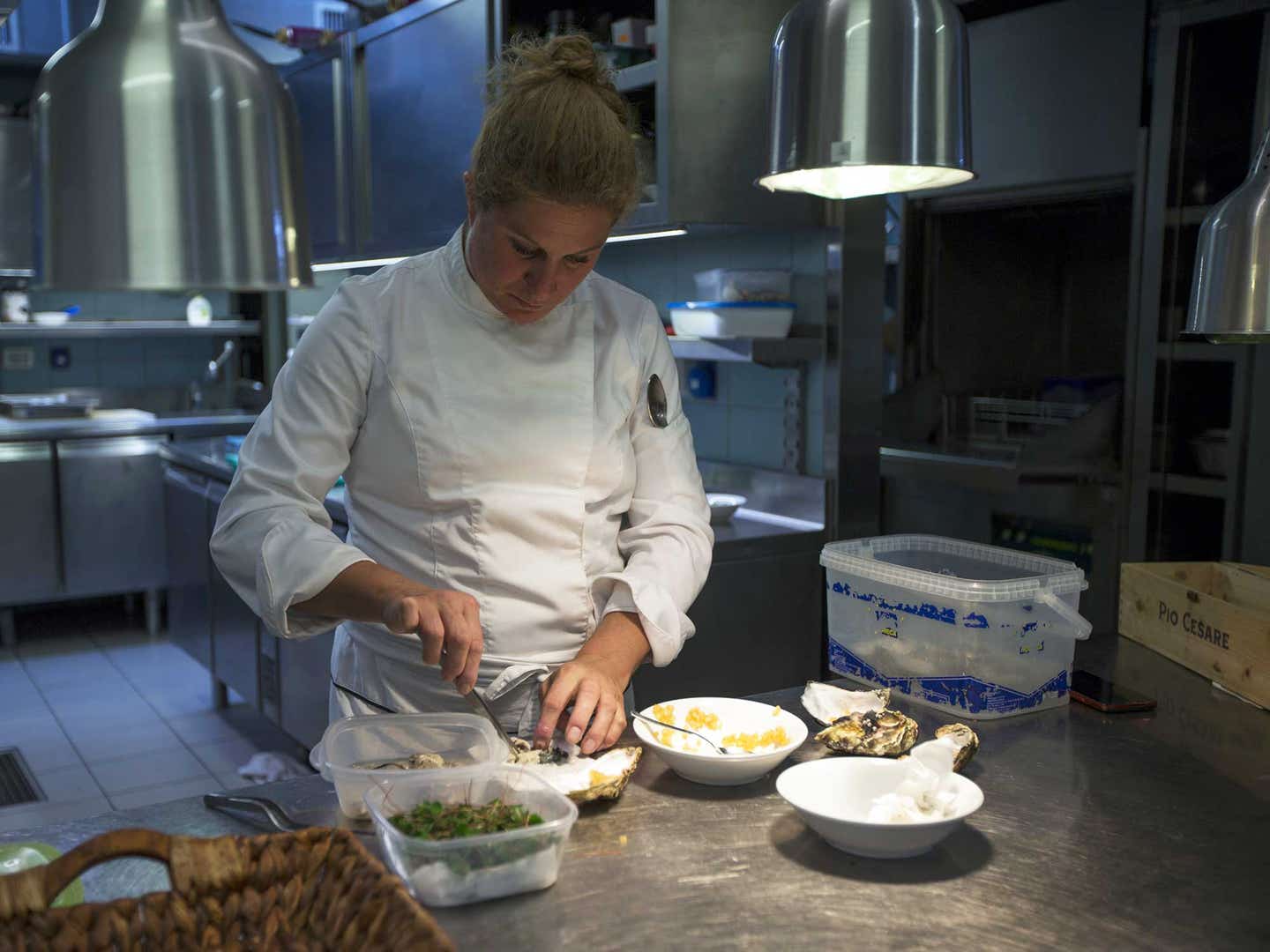
Why Has No One Heard of Ana Ros?
The Slovenian chef, who’s spent 16 years revolutionizing her country’s food, is about to star in Netflix’s Chef’s Table. Will the world finally pay attention?
Photographed in front of a suspiciously still lake on an overcast day, Slovenian chef Ana Roš stands midsection-up wearing nothing but a wire necklace of nine smoked fish skewered through their heads, their bodies fanned out just enough to cover her breasts. She’s stunning. Her blonde curls, piled on top her head, are soft; her pale skin glows against the moody backdrop; and her eyes turn upwards like the Mona Lisa’s smile.
Then you realize this is her bio page on the website of Cook it Raw, the currently-innactive macho gatherings of global chefs that confronted everything from culture preservation to sustainability. You see the other chefs pictured on the website—Daniel Patterson, Magnus Nilsson, Enrique Olvera, among others—and they're not just wearing clothes, but chef's whites. Roš seems out place; not only is she half-naked, but, as the site reminds you, she was the only woman to have participated at that time.
Read Patterson's bio and learn that he "has shaken up the narrow definition of Northern California cuisine"; check out Roš' and you see that she works "overlooking the sloping hills of Slovenian countryside" at her restaurant Hiša Franko, cooking a cuisine that is "flowery, herbal, feminine whilst as delicate as precise," whatever that means.
When Roš was selected to participate in Cook it Raw in 2012, she stepped onto an international stage with globally-lauded chefs for the first time. She was cast in front of culinary luminaries with the power to turn her into another René Redzepi or Alex Atala. They didn’t, and she’s received very little coverage since; but in just two months, that might start to change.
On May 27th, she'll kick off the first episode of the second season of Netflix Originals' Chef's Table, the docuseries produced by David Gelb, Clay Jeter, Andrew Fried, and Brian McGinn, and newcomer Abigail Fuller, that applies sharp, cinematic focus to the world's most influential chefs. Her inclusion along the likes of Enrique Olvera and Grant Achatz is as bold a statement as any that she's a chef worthy of international recognition.
What's less clear is how she reached such a peak with more professional experience in international diplomacy than kitchens. And when you take a moment to consider all she has accomplished, both in her 16 years running the countryside restaurant Hiša Franko and around the world, you can't help but wonder: Why isn't everyone talking about Ana Roš?
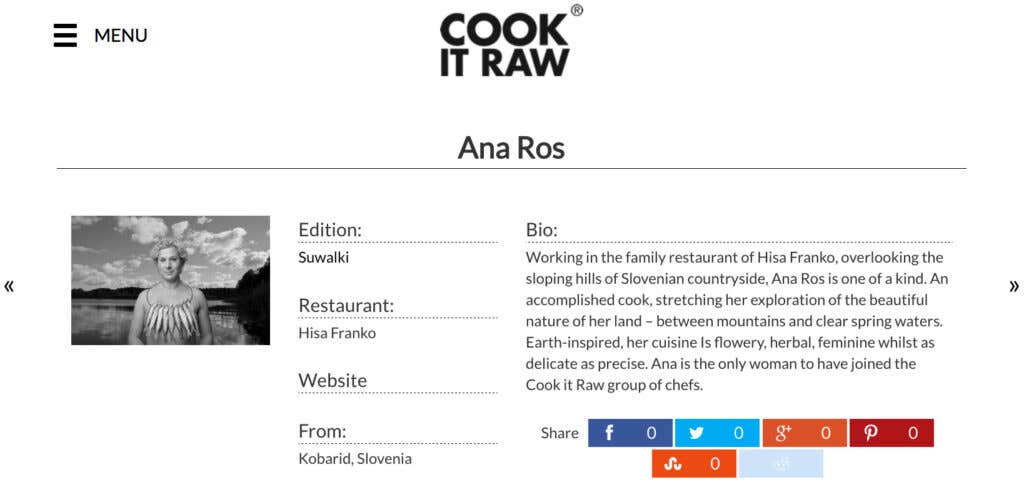
At Hiša Franko, pasta comes with toppings like sheeps' milk cottage cheese, langoustines, black trumpets, and bone marrow; or foie gras, smoked apples, tonka sauce, and long pepper, all ingredients that she's bought from the farmers around her. But when Roš craves Slovenian comfort food at home—which is, ironically, the floor above the restaurant—she makes her favorite pasta sauce, local tomatoes and a bit of basil, a reflection of Italy's influence on western Slovenia.
Located just three kilometers from the Italian border and 30 from the Austrian border in Slovenia’s alpine Soča Valley, Hiša Franko serves food that embodies these local spins on neighboring flavors. All of the ingredients Roš cooks with come walking distance from her restaurant—what she calls her zero-kilometer approach.
It’s the approach she’s stuck with for 16 years, after she unexpectedly found herself in charge of the restaurant when her husband Valter’s parents, the previous owners, decided it was too much. In 2000, Roš and her husband had to settle in Kobarid (population: 1,100) to take over the building. With Valter in charge of the wines, Roš set up in the kitchen, where she cooked old-meets-new Slovenian cuisine influenced by the seasons and whatever her cheesemonger or porcini mushroom forager or 20-year-old strawberry grower brought her that morning.
She transforms those ingredients into a salad of mountain berries, fermented cottage cheese, millet, porcini, and roe buck for a fine-dining style that’s not weighed down by unnecessary trappings. “When people leave the city and go on the countryside, they want to relax,” she says. “They don’t want too strict or severe of an atmosphere where you’re afraid of losing a fork.”
Her cooking, if underappreciated by the media, has won the respect of her fellow European chefs. In a 2015 article in IO Donna, a women's weekly magazine from Milan, Cristina Bowerman, the first Michelin-starred female chef in Rome, was asked to name the number one chef whose food she'd want to eat. She picked Roš. "I love it!!" she exclaims in Italian during the interview. "Strong woman, great cook, really deep not only in conceiving the dishes but also at playing with them."
What perhaps makes Roš’ prestige so notable is what’s notably missing from her resumé: culinary school, stages, or any sort of professional kitchen experience. In a past life, she was a former ski champion on Slovenia’s national team and contemporary dancer who took up French, German, Spanish, English, and Italian—before heading to university in Italy to study diplomacy.
But when she decided to change her life trajectory in 2000, she had to become fluent in a completely new language: cooking. Lacking professional training, she learned instead from those around her, such as her mother-in-law, the restaurant's previous co-owner, who she affectionately calls a witch—for her impressive collection of dried herbs and flowers that will heal any ailment you have. And she learned by example, letting neighboring farms show off their best ingredients and traveling to the world's best restaurants, including El Bulli and El Celler de Can Roca, with her husband to see what makes them tick.
“I think what grows together in nature normally matches together perfectly well [in dishes],” she explains. “I use fish as a ‘spice’ for the countryside dishes because, climbing [our] mountains, you see that all forests all meadows are facing the seaside, and the plants have beautiful salinated taste, and the animals do too because they eating these plants.”
While she tells me this, she can’t help but show a hint of a smile, because she knows—she knows this all sounds romantic, all this talk of hyperlocality and cultural preservation and foraging. But in Slovenia, this is how people cooked to survive, and in some places still do. If a zero-kilometer approach was enough to put Scandinavian food on the world’s radar, when will it be enough for Slovenia?
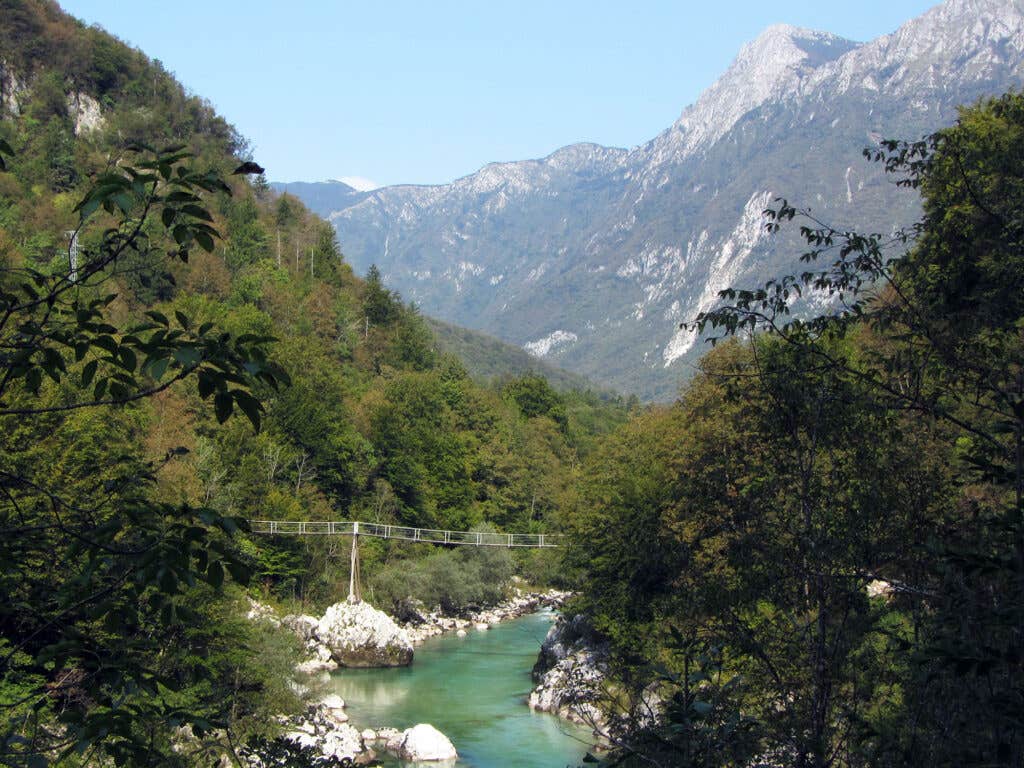
Type “Ana Roš” into Google and see just how little she attention she receives.
You'll find a story about her work in India with seven other women chefs, cooking with and mentoring underpriveleged girls. You'll read about her participation in the Gelinaz! Shuffle, the annual event where chefs around the world switch kitchens and attempt to recreate the home chef's dishes; she was one of the 28 international chefs who cooked for Wylie Dufresne's tribute dinner at wd~50 in 2014, at Rodolfo Guzman's Borago restaurant in Santiago, Chile last year.
But you won't read about her work with Alex Atala, cooking with recovering drug addicts while teaching them about making the most of wild plants in the kitchen. You'll find nothing on how she invites the town's children into her kitchen once a year to teach them the satisfaction you can get from baking a simple loaf of bread, which they'll make a meal out of, then bring fresh loaves back home to their families.
And you'll see little about her restaurant itself. Hiša Franko would easily take a spot in Michelin's Slovenia guide—except there's no such thing. And the restaurant's more casual format likely keeps it off the radar of the hugely influential San Pellegrino World's 50 Best List, which sets so much of the rhythm of Europe's food press.
The relative silence hasn't stopped her from pushing forward. Roš stars in a cooking show on Slovenian television; she recently spoke on a SXSW panel about the upcoming season of Chef's Table; she's participated in Identità Golose; and in the coverage she gets, her restaurant is often cited as one of the best restaurant in Slovenia. Since Cook it Raw, she's received a bit of coverage in American media here and there—a mention in the New York Times an in-depth interview with The Daily Meal. Oh, and her blonde curls make a guest appearance in a single un-captioned photo in Eater's 19-picture recap of Cook it Raw.
"Some chefs don't have much press at all," filmmaker David Gelb says in an Eater article. "We want some of the chefs to be very famous, but in other cases we reveal chefs in ways people may not know."
Her Chef's Table episode, a 45-minute-long dive into her life in Kobarid that's aimed at an American audience, could change that. A recent article about Roš on RTV Slovenia, a website dedicated to news about Slovenians around Europe, describes the episode as "a new step in the career of the 43-year old Roš, who is slowly but persistently stepping onto the world stage."
It’s only taken the world 16 years to pay attention.
Watching Roš flip through the photos on her phone, I see a few pictures of her plated food, but they’re scattered between shots of her kids Svit and Eva Clara, 13- and 11-years-old respectively, climbing along the Soča River and her dog Prince running through her backyard. When she comes across a series of selfies she took while on a hike, she gets a little flustered.
“There are moments I wake up in the morning and I say, ‘What are you doing? When I have to fill some form and they ask about my profession, I’m still sometimes like, ‘What should I write?’ I studied and graduated [after studying] international science and diplomacy, and now I’m a chef? Am I really a chef? Sometimes it seems like fiction.”
And it's possible that Chef's Table may change nothing. Since Niki Nakayama's "discovery" last year, she hasn't turned into a food media darling; Roš could very well face the same trajectory. Except it doesn't seem like she cares, considering that for the past 16 years, she's been running a restaurant that could put Slovenia on the world's radar, and it just...hasn't.
I get the feeling that regardless of what the episode does for her, she'll continue doing exactly what she's doing, cooking without the media stroking her ego. Right now, she's just trying to find a new book to start after finishing The Girl on the Train. The press is all gloss.
Read more stories from Ladies First, a column about people doing amazing things in the food world who happen to be women »
Read about the local way to hike (and eat your way through) the Slovenian Alps »
Check out our guide to Slovenia »
Catch the first season of Chef's Table here, and tune in May 27th to watch the second »
This feature is the first in a new weekly column which aims to celebrate all the incredible ways people are changing the food world, whether their goal is to innovate or to preserve. And these people all happen to be women.
Keep Reading
Continue to Next Story
